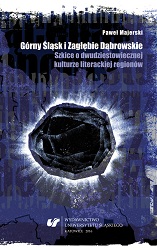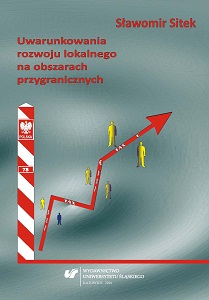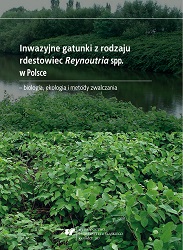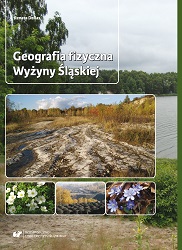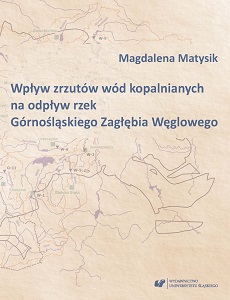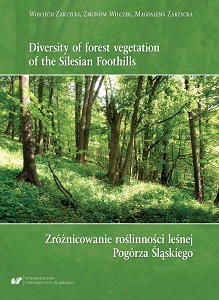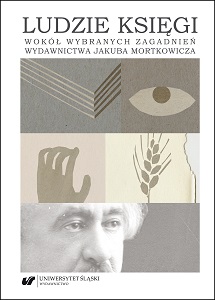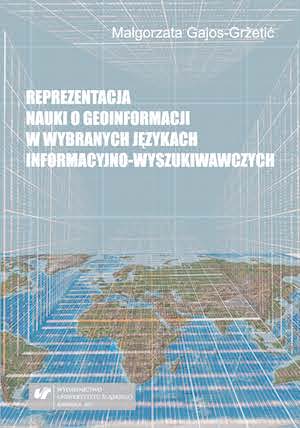Geografia fizyczna Wyżyny Śląskiej
Author(s): Renata Dulias / Language(s): Polish
Keywords: physical geography; region; environment; human impact; nature protection; Silesian Upland
The Silesian Upland is located in southern Poland and it is the westernmost part of the Polish Upland belt. According to the physico-geographical division, this macroregion comprises 5 mesoregions. The central part is covered by the Katowice Upland, to which the Jaworzno Hills are adjacent from the south-east, and the Rybnik Plateau from the south-west. To the north of the Katowice Upland there is located Hummock of Tarnowskie Góry, whereas the mesoregion of Chełm is the westernmost part of the Silesian Upland. The macroregion covers an area of about 3930 km². The highest point of the Silesian Upland is Góra Stodólska located on Hummock of Tarnowskie Góry (435 m a.s.l.), while the lowest place is situated near the mouth of the Kłodnica River flowing into Dzierżno Duże reservoir (about 203 m a.s.l.). The Silesian Upland is located within the West European platform, in its part called the Upper Silesian Block. It constitutes the geological foundation of the region, and is built of Precambrian gneisses and shales, on which sequential tectonic units have formed. What is the most important of them is the Upper Silesian Foredeep, formed as a result of the tectonic movements of the Variscan orogeny and built of Carboniferous rocks. These are mainly sandstones, mudstones, shale and hard coal, rich deposits of the last-mentioned are exploited in the Upper Silesia Coal Basin. In the northern and north-eastern part of the Silesian Upland, there is the Silesian-Cracow Monocline built of Mesozoic rocks, i.e. Triassic limestones and dolomites and secondarily Jurassic limestones. On the foundation of rich deposits of zinc and lead ores in the Triassic ore-bearing dolomites, a mining and metallurgical district, which was of considerable importance in Europe, was in operation until recently. The southern and south-western part of the Silesian Upland is located within the area of the youngest tectonic unit, i.e. the Carpathian Foredeep. It is built of Miocene rocks, i.e. sands and clays with deposits of rock salt, sulphur and gypsum. In the Quaternary, the Silesian region was within the reach of the Pleistocene ice sheets, i.e. of the San and the Odra, with which post-glacial formations, such as fluvioglacial sands, boulder clays, erratic boulders are associated. Pleistocene sands were exploited on a large scale as stowing in hard coal mines. The relief of the Silesian Upland is of a structural nature and is characterized by a diversified morphology, even more prominent because of the neighbourhood of lowland areas. The Middle Triassic Cuesta, which is distinctive in the geomorphology of the northern and north-eastern part of the Upland, is one of the four cuestas of the Silesia-Cracow Upland. It was divided into smaller parts by river valleys, and thus numerous epigenetic water-gaps were created, e.g. of the Czarna Przemsza River in Będzin and of the Biała Przemsza River in Okradzionów. In the central part of the Silesian Upland, there are hills and plateaux of the nature of horsts separated by grabens and tectonic basins. What is a characteristic feature of the Silesian Upland is the occurrence of numerous anthropogenic landforms, i.e. spoil heaps, quarries, sand-pits, subsidence troughs, sinkholes, transport embankments, etc. The Silesian Upland lies in the temperate climate zone, between the oceanic and continental climate. Here, mainly polar-marine air masses from the Atlantic (60% of days) and the polar-continental air masses from Eurasia (30% of days) arrive. Predominant are winds from western directions, while the average annual precipitation ranges from 700 to 800 mm. In the greater part of the Silesian Upland, the average annual air temperature is 7—8 °C. Due to the strong urbanization of the central part of the region, a meteorological phenomenon known as ‘an urban heat island’ occurs there. In addition, for several dozen years this area was distinctive in Poland because of its very high air pollution due to the intensive development of mining and industry. Since the 1990s, the emission of dust and gas pollution has clearly decreased. The area of the Silesian Upland is characterized by considerable groundwater resources, in contrast to meagre resources of surface water. The Triassic aquifer in the limestones and dolomites and the Quaternary aquifer in Pleistocene sands and gravels are of the greatest importance for the fulfilment of communal and economic needs. The groundwaters have always been within the range of anthropopression, which is evident primarily in the drainage of the basement as a result of mining activity. The lack of water in comparison to the demand makes it necessary to supplement the resources from the neighbouring areas. The Silesian Upland is located in the Baltic Sea drainage area in the Vistula and the Odra basins. Within its boundaries, the main tributaries of the Vistula are the Przemsza, the Pszczynka and the Gostynia, while the Kłodnica, the Bierawka and the Ruda are the tributaries of the Odra. The quality of the river water is poor due to the contamination with industrial and municipal sewage and saline waters from mine drainage. What is an extremely characteristic feature for the Silesian Upland is the so-called ‘anthropogenic lakeland’ — several thousand water reservoirs developed in subsidence troughs, post-mining excavations, and formed as barrier or dyke reservoirs. Due to the great diversity of natural conditions, in the Silesian Upland there are various soil types, among which brown, lessives, podzol and rusty soils are predominant. A significant percentage of the soils is constituted by rendzina produced on carbonate parent rocks. The soils of the region are within the range of strong anthropopressure. The forms of their degradation manifest themselves in the phenomena of waterlogging in the area of mining subsidence, over-drying in cones of depression, and above all heavy metal pollution in the areas of zinc and lead ores mining and metallurgy. In the area of the Silesian Upland, there is the occurrence of many plant association that have been grouped in several plant communities. The majority of the forests are of secondary origin and their distribution is uneven. Larger forest complexes occur on the outskirts of the region, and these are the Pszczyna, Rudy and Lubliniec forests. Pine forests are the dominant forest community, however mixed forests and beech forests are also quite common. Among the non-forest natural communities, an endemic group of Cochlearia polonica is of the greatest value, whereas among anthropogenic communities they are xerothermic grasslands. Despite the large anthropogenic transformation of the natural environment, the Silesian Upland is characterized by a large biodiversity and diverse landscape. Many areas and objects of animate and inanimate nature that are of enormous value on the national and European scale occur there. They are protected in landscape parks (3), nature reserves (14), protected landscape areas (11), the Natura 2000 area (11), landscape-nature complexes (12), ecological areas (27), documentation sites (4), and most commonly as nature monuments.
More...
